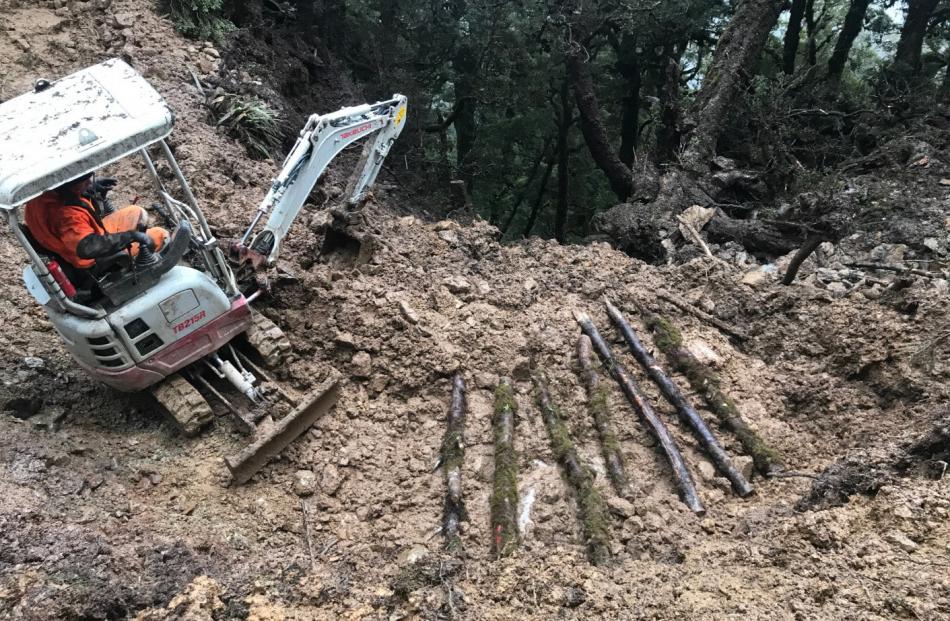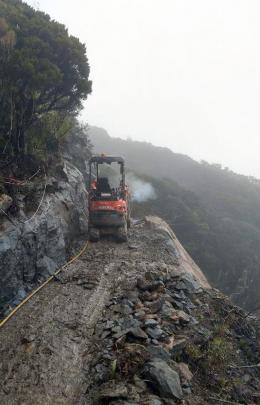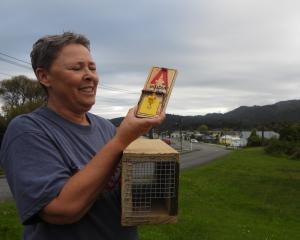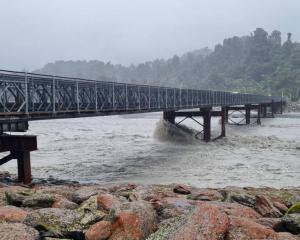The long-awaited Paparoa Track opens this summer. Greymouth Star reporter Helen Murdoch talks to some of the builders who endured 6m of rain, lightning and snow to create a track to remember.
Born of tragedy, created through dogged determination — the Paparoa and Pike 29 Memorial tracks are badges of honour for the crews who built them.
It is for the 29 Pike River victims that workers from around the country spent up to two and a-half years wrestling with the geography and the weather to carve a track over a mountain range, through untouched country and down to the sea.
The routes were laid out by track builder Hamish Seaton, who spent months walking the tops and clambering through the bush to determine the general route, and find the average gradient of 1:10, while creating a path scarcely visible in the landscape.
Crews, engineers and contractors from Westreef, Nelmac, the Department of Conservation, Abseil Access and the Natural Construction Company started cutting the track and building the suspension bridges, 20-bunk huts, timber bridges and infrastructure along the 55km Paparoa Track and 11km Pike 29 Memorial Track in August 2017.
The crews lived in huts and bivvies accessible only by foot, motorbike or helicopter while working amid snow, heat, rain, rock and thigh-deep mud to build a track they are ultimately all proud of.
The multi-use main track forms New Zealand’s 10th Great Walk and is the first specifically constructed since the Fiordland’s Kepler Track in 1987.
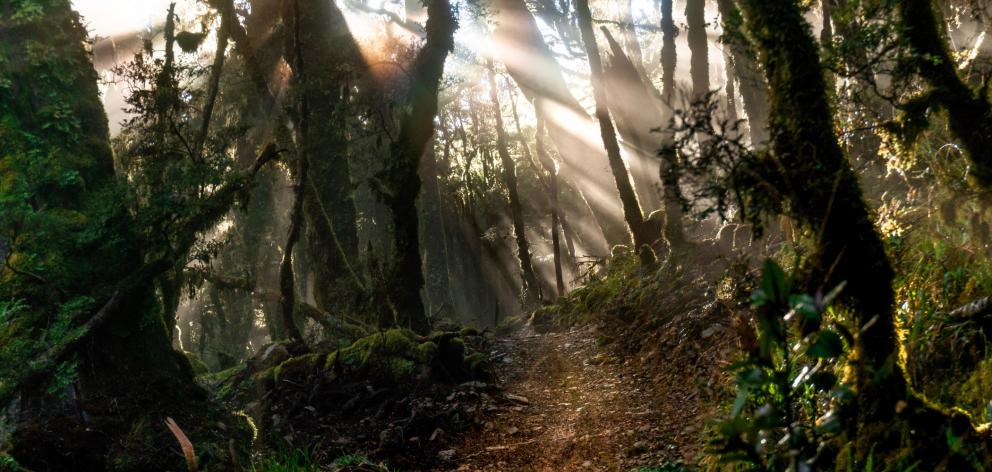
His main crew’s fly-in camp on Watsons Creek was 8km up the Pororari Gorge. From there two five-person crews worked rotating shifts of seven days on, seven off.
His second camp at the confluence of Cave Creek and the Pororari River housed four workers, working five days on and two off.
Their combined task was building 26km of track from the junction of the old Inland Pack Track, from the coast, southwards up the Paparoa escarpment.
"It’s a volatile environment," Mr McIlraith said.
"Trees fall down when they want, you can get 100mm of rain overnight and there is a lot of mud.
"It takes a lot of patience and understanding and accepting it is what it is and not getting too impatient."
His regularly talked of the conditions with his crews.
"It was important not to get caught up with how much work you had to do, because it became too daunting a prospect."
Instead, breaking it down step-by-step made it manageable while the seven-day shifts, which gave the teams time to dissociate themselves from the relentless grind, proved the best way to deal with back-country life, he said.
But they knew what they were getting themselves in to.
Many of the workers, Mr McIlraith included, had spent years working on Old Ghost Road in Buller and were familiar with West Coast landscape and terrain.
The teams were skilled, comprised of workers with mining or forestry backgrounds, and capable machinery operators or blasters experienced in working on the land.

"The camps were good — but they were not home."
Despite the best laid plans, simple small breakdowns often halted progress until alternatives could be found.
"There is no Mitre10 or engineering shop down the road. You had to accept it and deal with it," Mr McIlraith said.
One thing none of the crews could fix was the weather. Paparoa’s annual rainfall is 6000mm (6m a year).
"And we had more than that this year. It’s just phenomenal."
Despite the adversity, all of the team learnt they were good enough.
"We started with a good crew and have an exceptional crew now.
"Paparoa has been the most challenging track to build — and we could cope."
As well as their section of the track, the crews also built an affinity with the men of Pike River.
"Many of the men were from mining families or had been miners. There was a real affinity and kinship with the [Pike River] families."
The crews respected the chance to build the track as a memorial to the Pike River miners.
"We recognised they should not be there and we wanted to stay safe. Those guys are special to us."
Mr McIlraith said the most satisfying thing for him was participating in building the track, and his pride in the crews who allowed it to unfold.
"They can hold their heads up and be proud."
Crews working under Nelmac’s Tom Woodward have finished 5km of track north of Moonlight Tops Hut and are still hard at work on the 11km Pike 29 Memorial Track, which drops off the main track north down to what will be the Pike River Mine Interpretation Centre.

While on the tops they stayed in Moonlight Hut, and moved to the Pike River Mine buildings when they started the Memorial Track.
Now that the mine’s re-entry is underway they have moved again to a bivvy in high bush halfway up the track, accessible only by helicopter, motorbike or foot.
"But bad weather over the last six months means the helicopters can not fly and we have to shuttle everything on motorbikes," Mr Woodward said.
MR Woodward, who has worked in Chile and Patagonia building mountain bike tracks, said the scenery and birdlife found in the Paparoas was fantastic.
"The bush is beautiful at Moonlight. We hear kiwi calling at night, see kaka and have kea flying in.’’
The storms were what grabbed the workers’ attention.
"Every week we have a storm that if it happened in Nelson or the East Coast people would talk about it for the next 10 years."
Sheets of lightning, rain turning to hail and snow and deluges turn tracks under construction into mud so deep the crews have to lay logs across it to stop their diggers sinking.
Passion keeps the crews going.
Many of them are dedicated mountainbikers.
"A lot of people would be keen to do this until the conditions get too tough — but we want to get it done because it is cool."
Mr Woodward said it took a special kind of person to see such a tough job through to the end. He would remember the job for the unique chance to spend so much time in the bush and the logistical nightmare of trying to use helicopters in West Coast weather.

His crews were always close to the 29 men of Pike. They would drive past the mine memorial, stop and walk around; a section of the memorial track looked down on the mine’s ventilation shaft would be where they often paused to talk about the miners.
"I feel privileged to be part of this and will be proud when people ride the track and I can stand back and see people enjoy it."
His other hope was that the track would breathe new life into Blackball.
"I’m hoping when I come back in 10 years it is a flourishing town."
Crews under Department of Conservation Paparoa Track operations supervisor Mike Osborne experienced conditions at both ends of the spectrum.
Starting work in January 2018 from the Ces Clark to Moonlight huts, at the track’s southern end, the two four-strong crews blasted and clawed at rock on steep faces across 8km of the Moonlight Tops. Their task to build 2.4km of the northern Inland Pack Track saw them deep in mud every time it rained.
"As soon as it rained it was a quagmire. We were knee deep and just had to get on with it."
The payback for Mr Osborne and his team was the chance to work in such diverse country.
"It threw something different at you every day. And there was amazing weather — both good and bad.
"The dedication of the people involved and their commitment to get this job done is massive and I am proud to be part of it."
Mr Osborne’s connection with the track will continue — he is tasked with looking after it into the future with the help of hut wardens, back country crews and those who bike and hike the trails.
"I want people to enjoy the very special place that it is and reflect on the history of the Pike catchment in what is a raw and untouched part of the world."

